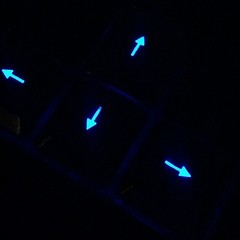-
Posts
25 -
Joined
-
Last visited
Awards
This user doesn't have any awards
About MatthewAscough
- Birthday March 25
Profile Information
-
Gender
Male
-
Location
Hull, England
-
Interests
Servers, Networking, and Cameras.
Recent Profile Visitors
867 profile views
MatthewAscough's Achievements
-
MatthewAscough changed their profile photo
-
I have a COSMOS C700P with inbuilt RGB and fan controller (same one as the MasterCase MC500M) but the manual says the RGB controller can be controlled by the motherboard. I've connected the RGB in of the controller into the standard RGB header on my motherboard (X570 Aorus Pro) but can't seem to find how to set the case's controller to listen to this. When I power cycle the controller it listens to the motherboard's signal for half a second or so then just goes into its own colours again I've connected a strip of standard 12v LED tape to the same header so know the motherboard is working fine. Anyone got any ideas before I just re terminate the case's RGB so I can connect that straight to the motherboard?
-
I do this exact thing a lot at different places I've worked and you're always best off avoiding IP and using as little processing as possible (don't want everyone on stage seeing the conductor a second later than they should). You won't need a high quality stream for it (just need to be able to make out what the conductor's doing) so what we have is a relatively cheap CCTV camera going into a 16x16 video matrix via composite which then gets distributed to screens across the venue via standard composite cable. Best option for you will likely be a cheap CCTV style camera or even and old video camera and a pair of composite to cat5 convertor boxes (or even just one long composite cable depending on length and quality required). That way you'll have minimum processing thus minimum latency and you'll be avoiding any problems brought in by trying to run IP based equipment over a school network which could have all sort of VLANs and port/protocol blockings set up.
-
When locked to LTE you won't be able to make calls (and texts on certain networks) as 3G or 2G is needed for calls (CSFB) unless your device supports VoLTE on your network. Some networks even disable VoLTE/kick you off completely while locked to LTE as your device reports that it can't CSFB.
-
Yep, fan side up. Reason I went with the 1000 over the 850 was so the fan didn't spin up (and it was only about £5 more). I've opened a case with Corsair so hopefully they'll RMA it. If not I'll just buy a second hand 1500VA UPS and run that without batteries in.
-
I recently bought a Corsair RM1000x and it has very bad coil whine, to the point where I can hear it over two SP120s on full… It's the same with and without my 7950 plugged in. I was going to try to RMA it but if I run the PC through my UPS (APC 750VA so can't really run like this under heavy load) the coil whine goes completely so I'm wondering if it may be my electricity being a bit crap?
-

How fast is the LTT member's internet connection?
MatthewAscough replied to zephiK's topic in Networking
New fibre line. http://beta.speedtest.net/result/4993781419 -
I know, double NAT... It's worked fine for the last year or so, so I've seen no reason to change it until I get 250/125 Mbps fibre in a few weeks and the N600 is going and Smoothie's red interface is going straight into the ONT. Dotted black = 100Mbps copper Solid black = Gigabit copper Blue = 4x 1Gbps link aggregated Red = Gigabit fibre In terms of IP addressing, the main network is on 192.168.0.1/23 with servers, switches, APs etc. being on 1.x and PCs, phones, tablets etc. being on 0.x. There's also an experimental guest network on 10.0.0.1/24 and the N600>Smoothie network is on 172.16.0.1/24.
-
I'm not entirely sure as to how it needs setting up as I've never used it but Speedify (http://speedify.com) should be able to achieve this for you.
-
I don't know much about the CPE510s but a pair of Ubiquiti NSM5s (https://www.ubnt.com/airmax/nanostationm/) should do the job and wouldn't be that much more expensive. UBNT even have the AirLink calculator (http://airlink.ubnt.com/) which will give you a rough idea as to whether it would actually work due to obstructions and relief.
-
I would get another motherboard with support but it looks like only the EVGA SR-2 supports overclocking on dual LGA1366 Xeons but it appears to be discontinued and actually costs more second hand than my server did in the first place.
- 18,254 replies
-
- cinebench r15
- cinebench
-
(and 3 more)
Tagged with:
-
It's a Gateway/Acer OEM version of a Supermicro X8DTU-LN4F+ (http://www.supermicro.com/products/motherboard/qpi/5500/x8dtu_.cfm)
- 18,254 replies
-
- cinebench r15
- cinebench
-
(and 3 more)
Tagged with:
-
I've already had a finger in one while hot swapping an SSD... Not as far as I can tell but it's not really something I've really looked into.
- 18,254 replies
-
- cinebench r15
- cinebench
-
(and 3 more)
Tagged with:
-
GPU-Z is in the upper right and it's a 7950, I didn't realise that GPU-Z didn't say that. They're 80x38mm.
- 18,254 replies
-
- cinebench r15
- cinebench
-
(and 3 more)
Tagged with:






